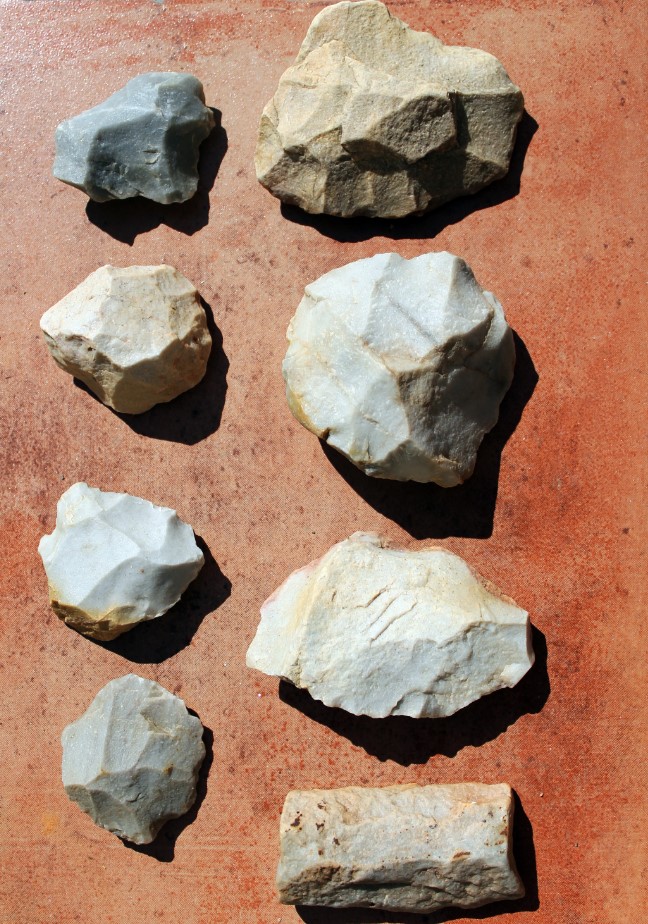The rañas of Alía, Logrosán, and Cañamero constitute raised areas in the form of a tableland and are an important site at which human presence has been confirmed since the Middle Palaeolithic, between one hundred thousand and forty thousand years ago. One of the most noteworthy details is that there are not only remains of our species but also of Neanderthals. On these rañas we can find several ‘workshops’ for the making of stone tools, which are basically chips which could be used as scrapers for tanning skins or after numerous modifications as spearheads or arrowheads.
The most striking Palaeolithic record of the territory of the Villuerca-Ibores-Jara Global Geopark of the UNESCO is that of the Middle Palaeolithic between one hundred thousand and forty thousand years ago under the predominance of the Mousterian stone-working tradition. Indeed the remains in this area are exclusively of stone and based on numerous findings of carved quartzite pebbles. These tools were made by means of the so-called Levallois technique, which allowed the obtaining of several chips from a quartzite core.
One of the special features of these findings is that they are located on the rañas of Alía, Cañamero, and Logrosán in the open air. This is a very different context to those of the river terraces, caves, or rock shelters on which the studies of this period traditionally concentrated. Another detail which makes the site exceptional is the confirmed occupation of the territory not only by human groups of our own species but also by Neanderthals.
The rañas are major sedimentary formations. They consist of extensive superimposed layers of clayey and sandy materials and quartzite pebbles swept away by the river waters and deposited on these plains or sedimentary basins in which they can now be seen.

